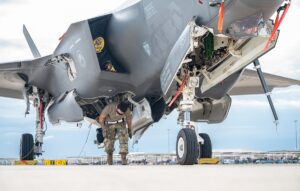
A significant number of Lockheed Martin [LMT] F-35s in the U.S. and abroad, including the 33 in the Israeli Air Force, are undergoing inspections of the aircraft's Martin-Baker Mk16-US16E ejection seats to determine whether the seats have enough explosive, magnesium powder in their cartridge actuated devices (CADs) to ensure the safety of pilots who punch out. As of July 29, "over 90 percent of the inspections on Marine Corps ejection seat CADs were complete," Navy Chief Petty Officer Matthew Olay,…














